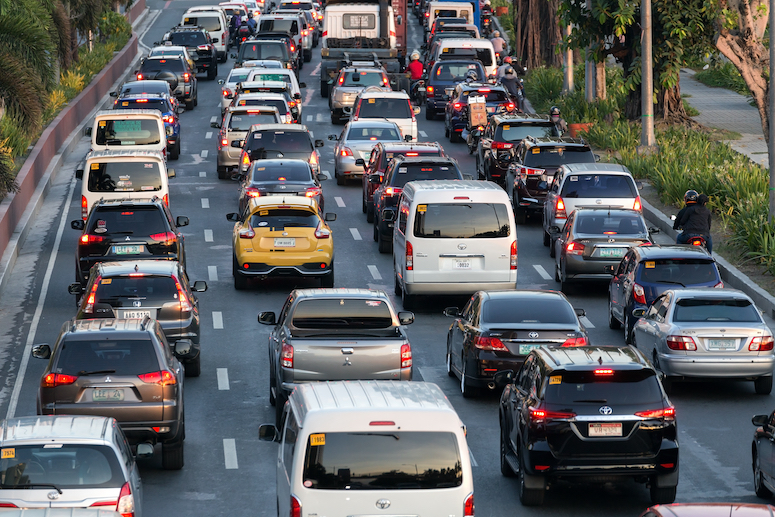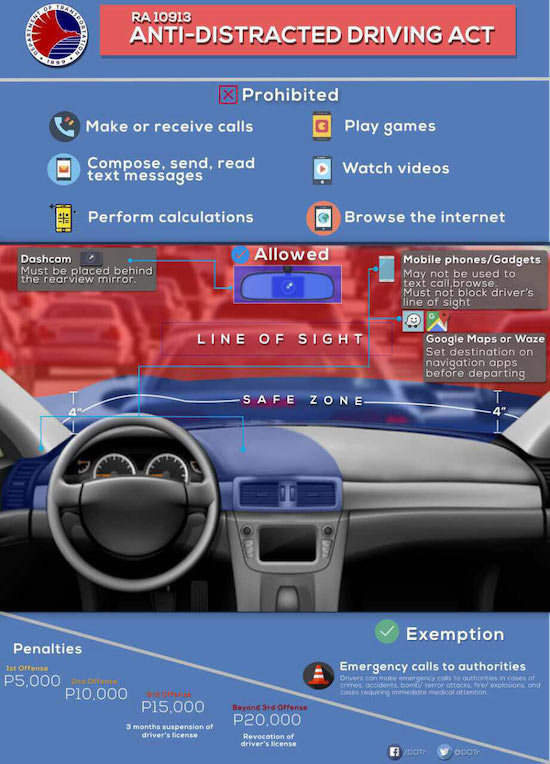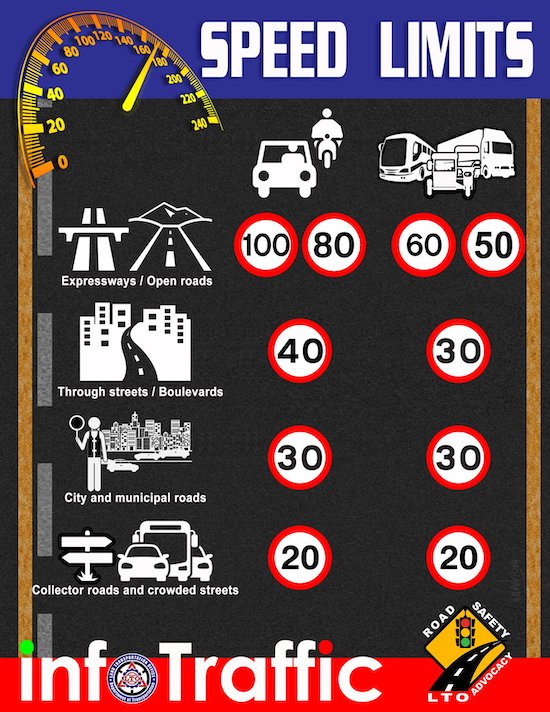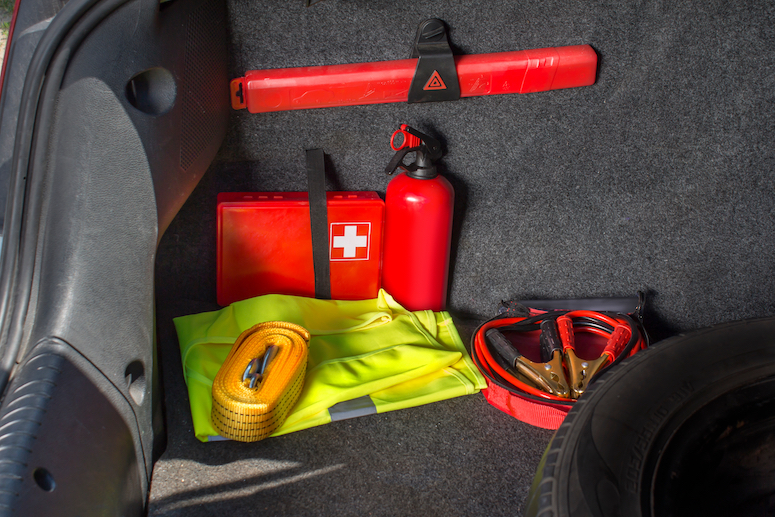#TripTips: Tips and tricks for a safe road trip this summer
Summer calls for out-of-town trips, which means people are heading out of Manila to their hometowns and vacation spots, causing traffic across major roads and expressways.
The Holy Week exodus caused heavy traffic jams both in the North and South Luzon, with the North Luzon Expressway (NLEX) recording an average running (or crawling) speed of 5 kilometers per hour at one point.
While probably not as bad as the situation during Holy Week, roads could get congested again especially during long weekends as almost everyone drives to places like Pampanga, Baguio, La Union, and Tagaytay.
If you want to get to your destination as quickly as possible, here are some ways you can beat the traffic and enjoy the trip.

Leave before or after the actual long weekend
May 1, Labor Day, falls on a Monday, marking another long weekend for all.
Avoid being stuck in traffic by leaving earlier or later than the actual long weekend. For long drives, it’s best to leave before dawn, ideally around 3:00 a.m. to 4:00 a.m. For a long weekend starting Friday, leaving mid-morning and having lunch on the road in time for checking in to your hotel is not the best idea.
If your work is flexible and can be done remotely, try to leave a day or two earlier before the long weekend starts so you can settle in while still on the clock and avoid the rush of vehicles taking the same route. So for long weekends of Friday, Saturday, and Sunday, leaving on a Wednesday is a good bet.
Avoid going with the flow on the return trip as well. Driving back to Manila on a Sunday evening on long weekends can be stressful, especially if you get caught in the middle of the 5:00 - 6:00 p.m. rush. You can opt to leave the day before or stay an extra day for a hassle-free drive. Alternatively, you can also leave later in the evening just to avoid the worst of the traffic.
Know the best exit and alternative routes to take
New exits in some expressways were completed during the pandemic era, some of which offer faster travel time than the routes you may previously be familiar with. Confirm with your resort, locals from the area, or friends who have driven through recently, so you know which is the best exit to take to avoid missing exits or exiting into smaller towns too early.
For instance, you can cut down travel time to Baguio, La Union, or anywhere in North Luzon from Metro Manila by taking the Tarlac-Pangasinan-La Union Expressway (TPLEX). Baguio is now only roughly 5 hours away through the TPLEX exit in Pozorrubio, Pangasinan.
Meanwhile, those going to Tagaytay usually use SLEX and take the Sta. Rosa exit or pass through Aguinaldo Highway in Silang. The Cavite-Laguna Expressway (CALAX) is a new alternative route through CAVITEX that reduces travel time to Tagaytay to just 2 hours.
Those heading to Batangas can also take advantage of a new bypass road on the STAR toll going to Bauan (which eventually will lead all the way to Anilao), so you can avoid the traffic in the busy town centers.
When driving further South, sometimes taking the backroads and diversion roads can get you to places quicker than having to pass through major choke points like San Pablo and Lucena.
Install and reload your RFID before traveling
It’s no secret that the number of cash lanes in major toll roads has been reduced to force the driving public to convert to using the cashless payment system using the RFID. However, many drivers still prefer to pay in cash. According to NLEX operators, 30% of the vehicles that pass through have yet to install RFID and thus cause bottlenecks in the few cash lanes.
To ensure a faster drive, have your RFID installed and ensure that it has sufficient load before going on a long drive. There are many ways to top-up your EasyTrip and Autosweep RFIDs, including e-wallets like GCash and online banking apps. You can also reload from select partner malls, gasoline stations, and convenience stores, among others.
Use navigation apps
Traffic and navigation apps have really changed the way we travel. You can immediately see the latest traffic congestion and possible road obstacles using Google Maps and Waze. Some apps even provide you with alternate routes and traffic updates, so you can reduce your travel time. Invest in a proper mount on the dashboard for your smartphone, only use the GPS for navigation while driving, and make sure to set the destination before departing.

Do not text and drive
As a driver, you can use your phone for navigation, but you can not use it for other tasks such as texting or watching videos despite your boredom.
According to the Department of Transportation, making calls, reading or sending messages, playing games, watching videos, or browsing the internet on mobile phones are all prohibited under RA 10913 or the Anti-Distracted Driving Act, with stiff penalties to drivers. Fines range from P5,000 for the first offense to P20,000 and revocation of driver’s license on the fourth offense.
If you do need to make a phone call or send a text, pull over to a safe location first. If coordinating with people in other cars, designate someone else in the car to be the one to handle the calls and texts.

Observe speed limits
Speeding is the most common cause of accidents on the road, so make sure you observe speed limits, especially on unfamiliar roads or during inclement bad weather. It may be tempting to gas up and speed away once there’s a stretch of open road, but did you know that even expressways have speed limits?
In case you don't know, the minimum speed limit in all expressways is 60 kph while the maximum speed limit for cars and motorcycles is 100 kph, according to the Land Transportation Office (LTO) based on Republic Act 4136 or The Land Transportation and Traffic Code of the Philippines.
The general speed limit in the Philippines is 60 km/h on most highways, while the maximum is 100 km/h for passenger cars and motorcycles on expressways. According to LTO, while there is a mandated speed on all types of roads, certain LGUs or municipalities have implemented speed limits of their own, based on their respective road and traffic conditions.

Download a road companion app
If you’re passing the expressways, you’ll need extra preparation, like checking your RFID balance, knowing the proper toll fees, and knowing the best places to fuel up, take restroom breaks, and eat on the road. The MPT DriveHub App is a new road companion app by the Metro Pacific Tollway Corporation that aims to make road users' journey less of a hassle, with highly practical features.

With this app available on Google Play and the App Store, you can:
- Manage your RFID account and easily see how much load is left in your RFID account and reload anytime using GCash or PayMaya for instant credits;
- Calculate your toll fees and avoid holding up the toll booths by preparing funds beforehand. Find out how much money you need to reload before your trip by computing the tolls before your trip;
- Get real-time traffic advisories. To help anticipate road conditions, app users can receive traffic updates so they know the situation on their route;
- Call for emergency assistance. Ever experience a car malfunction or flat tire in the middle of nowhere and need towing and you don’t know who to call? You can get roadside assistance direct from the app; and
- Find the best rest stops. Find out where the nearest gas stations, restaurants, and restrooms are when you drive. If you’re going on a long drive, this handy feature can help you manage your travel time by planning your meal/rest stops.
Pack essentials for the ride
Aside from driving and vehicle essentials such as your driver’s license, insurance, and OR/CR (registration documents), pack enough food, drinks, and emergency supplies inside the car for the journey, especially if you’re traveling with kids.
In case lines for restaurants are too long at stopovers, make sure to bring enough snacks and water to keep everyone happy. Other useful things to have in the car include a first-aid kit, flashlight, roadside emergency kit, phone charger, and powerbank to keep your GPS phone powered.

Travel using point-to-point buses
While it’s convenient to have your own transport to go around, you can help reduce the high volume of private vehicles on the road by making use of public transportation instead. Premium point-to-point buses offer reliable and efficient service with minimal stopovers. Since buses can use dedicated bus lanes and have to keep to strict time schedules, taking the P2P bus usually means getting to your destination in the fastest possible time, while reducing traffic and parking problems in the tourist spots you'll be visiting.
For instance, destinations like Baguio, Baler, Ilocos Norte, and Bicol are easily accessible with regular and comfortable P2P bus routes and can be easily toured using local transport. This way, you can sleep and rest well during the journey instead of having to drive the whole time.


